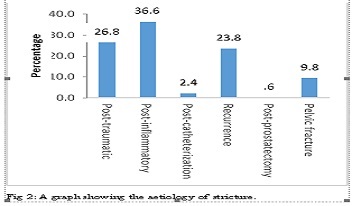Current Management of Urethral Stricture Disease in Zaria
Keywords:
Urethral stricture, Current, Aetiology, TreatmentAbstract
Background: Urethral stricture is prevalent in all regions of the world with varying aetiological factors. Different surgical modalities have been employed in its management over the years. This study aimed to review etiologic factors, types, treatment modalities and outcomes of urethral stricture disease.
Methodology: The medical records of patients who were managed for urethral stricture disease between 2006 and 2016 were reviewed. Data were extracted from patients' case files and operation records, which included the, demographics, aetiology, location, length, type of surgery for the urethral stricture and outcome data where available. The data obtained were analysed using statistical program for social sciences (SPSS) version 21.0
Results: We retrieved the records of a total of 288 patients managed for urethral stricture within the study period. However, we analysed only 140 patients who had complete records. The mean age was 43.9 years. Most strictures were located in the bulbar urethral region (52.4%). Post-inflammatory strictures were the commonest, comprising of 36.6% of all cases. Anastomotic urethroplasty was found to be the most common form of surgical repair (44.0%). Buccal mucosal graft (BMG) urethroplasty was predominantly used for long segment strictures involving the bulbar urethra while penile skin flap urethroplasty was used for most strictures in the penile urethra or peno-bulbar urethra. Anastomotic urethroplasty had the best outcome.
Conclusion: The findings of this study showed that post inflammatory urethral strictures remain the commonest types of stricture in our environment, consequently, it is imperative to develop public health strategies to reduce the incidence of sexually transmitted infections, which underlies the occurrence of these strictures. In terms of treatment, anastomotic urethroplasty was the commonest procedure, while BMG and penile skin flap urethroplasty were mostly employed for long segment strictures.
Metrics

Downloads
Published
How to Cite
License
Copyright (c) 2021 KI Abdulsalam, M Ahmed, TA Lawal, A Bello, N Oyelowo, T Musliu, HB Kolapo, M Salihu, F Lovely, A Sudi, A Mudi, HY Maitama

This work is licensed under a Creative Commons Attribution-ShareAlike 4.0 International License.




